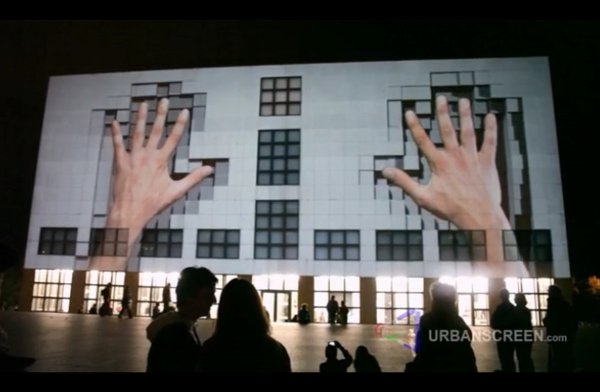Speaking Truth to Power…be that Power a Government Head or Client Company Principal: it’s part of the job.
Just how much a part of the job is up to the individual – each of us, consultant or employee. If one’s job entails advice and direction; every step away from the hard truths is a step away from one’s integrity.
Creating art and experience is not a card game; though, some make it so.
In order to collaborate most effectively, to yield the best possible product, one must be committed to candor, sharing information, supplying one’s team with all the tools and knowledge possible in order for each to be effective at the job. As autonomous individuals and as collaborative teams our people must be prepared with every bit of information in order to make the best and most appropriate judgment calls, should it fall to them at a critical moment.
This is simple Leadership.
Empowering one’s team and employees as well as being completely candid with one’s Clients or hierarchical superiors is critical to success of business or project.
Sharing information – opinions and experience – from all sides not only contributes to the quality of the overall body of knowledge on a given team; it empowers all individuals to appreciate the entire context of a project or strategy rather than finding themselves limited to an arbitrarily constructed, myopic perspective.
Such empowerment can lead to the pre-emptive discovery of answers – solutions to problems that may arise – well before the actual need presents itself.
As important, if not even more so, is complete candor with one’s client or higher-ups. This is where things can get dicey and inordinately complex; as one’s personal responsibilities extend beyond simply feeding and clothing oneself and into the care and feeding of families and families of employees there are sometimes “safer” decisions made that do not serve a given project.
But…
The responsibilities in the face of said Dilemma remain: we are obligated to share our full perspective, the entire truth, with our Clients. This is often a risk; though, a risk that can be mitigated with diplomacy and nuanced presentation.
Seriously, how many of us have been presented, time and again, with a client who thinks s/he knows more than s/he does about a given project or vision and how to best realize it; continually making decisions that actually undermine the potential success of the project? (That’s rhetorical; I pretty much already know this answer…)
Our job – as Creatives, Directors, Consultants – is to tell the Awful Truth.
In so many words. The Truth:
- cannot be hinted-at
- cannot be alluded-to
- cannot be subliminally understood
It Must Be Spoken. Clearly.
The Customer is not necessarily “always right;” though, being the One Holding the Purse, the Customer can insist on things being done the way s/he wants.
Methodologically, the most effective way to present strong, opposing views on in/appropriate courses of action is to have an operational, professional and personal history of candor; such that the client isn’t shocked at one’s sudden directness.
Cultivate and nurture a reputation for laying things out clearly, with respect but holding nothing back and chances are what you say will be heard.
It may not be embraced or followed, but it will likely be heard.
Looking the client in the eye and saying something such as, “…look. It’s your project, and I will do whatever you decide you want to do with it. However, I am honor-bound to share with you my considered opinion that if you do go down this path you are considering, you stand a very good chance of losing your entire investment. I strongly urge you to think about this before moving ahead and, if moving ahead on this course is your ultimate decision, I will see to it that you are as protected as possible. But, I think you’ll lose your shirt.”
Don’t sugar-coat it.
In this business, as in many businesses, people hear what they want to hear. Thus, we are bound to tell a stark and clear truth so that it is heard. Shying away from that responsibility has contributed to world-famous (and not so famous) failures…fo evah!
If it isn’t actually, clearly, incontrovertibly said; it will not be heard. AND, you may end up being blamed for the failure, ultimately.
True, there are some Deciders who simply don’t want to hear it; some who will want you excised from the mix as they don’t want to be made to face the truth. You want to work for someone like that?
A Note: if you happen to be new to this business and out of school less than ten years, you might want to tread with a lighter step. While you may be a prescient, virtual genius with remarkable insight (to your mother! <g>), a good suggestion would be to be sure you have a few years of observation, experience and learning under your belt before you lay down such absolutes. Just sayin’… Not that you can’t raise the question, seek out allies on your team to help articulate your concerns and POV; just be sure you have the experience to back up your opinion when you give it. Being somewhat circumspect about this will serve you well.
That being said; if you feel strongly, say so. If not to the Power that Is; then to your Powers that Be.
Less than the absolute and clear truth, offering any ambiguity at all, undermines the truth we are called-upon to communicate. Ya gotta lay it out and place it in the hands of the Decider…with the full grasp of your point of view…that is what we are paid for, that is our responsibility.
Embrace it adeptly, and the risks will be minimal. Accepting those risks is up to you. As I cite, above; eschewing those risks moves one away from full integrity. Evaluating the course best taken is a personal choice.
If it were easy, everyone would actually be doing it.
Happy New Year.
My eBook, “imho” is still free! For iPad and OS, downloadable from the iTunes store or the Apple Book Store. Containing the basic tenets, techniques and methodologies for the creation of emotionally engaging, compelling experience; I offer a full refund if you find it not of significant value.


